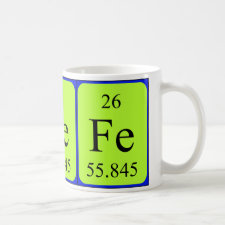
Authors: Lu F, Wang LY, Wu FQ, Ying XF, Gu RA, Yao JL, Zhang HL, Deng ZW
Article Title: Evaluation of the binding specificity of electrosynthesized poly-ortho-phenylenediamine molecularly imprinted with metal chelates.
Publication date: 2011
Journal: Microchimica Acta
Volume: 174
Issue: (1)
Page numbers: 47-54.
DOI: 10.1007/s00604-011-0595-2
Abstract: We have examined the specificity of electrosynthesized poly-o-phenylenediamine as a kind of material molecularly imprinted with metal chelates. Molecularly imprinted polymers (MIPs) were prepared in situ by an electrochemical method. The EDTA chelate complexes of Cu(II), Zn(II), Fe(III) and Cd(II) ions were used as templates of the MIPs deposited on a gold electrode of a quartz crystal microbalance (QCM). The binding ability and specificity of the MIPs were investigated via the frequency response of the QCM to the adsorption of the template chelates and their analogs. Linear relationships are observed between the frequency shift and the concentration of the template chelates over a typical range of ~10-6 to ~10-4mol L-1. The results reveal good binding specificity of such MIPs for their templates over structurally related analogs, but the selectivity coefficients are less significant than that for enantiomers. The results also suggest no significant correlation between binding specificity and the ionic (or atomic) radius of the investigated metal ions. The observed specificity is qualitatively attributed to the overall conformational difference of the metal-EDTA complexes resulting from their difference in both ionic radius and electronic structures
Template and target information: EDTA chelate complex of Cu(II), EDTA chelate complex of Zn(II), EDTA chelate complex of Fe(III), EDTA chelate complex of Cd(II)
Author keywords: Molecularly imprinted polymers, binding specificity, Electrochemical method, Metal chelate



Join the Society for Molecular Imprinting

New items RSS feed
Sign-up for e-mail updates:
Choose between receiving an occasional newsletter or more frequent e-mail alerts.
Click here to go to the sign-up page.
Is your name elemental or peptidic? Enter your name and find out by clicking either of the buttons below!
Other products you may like:
 MIPdatabase
MIPdatabase









